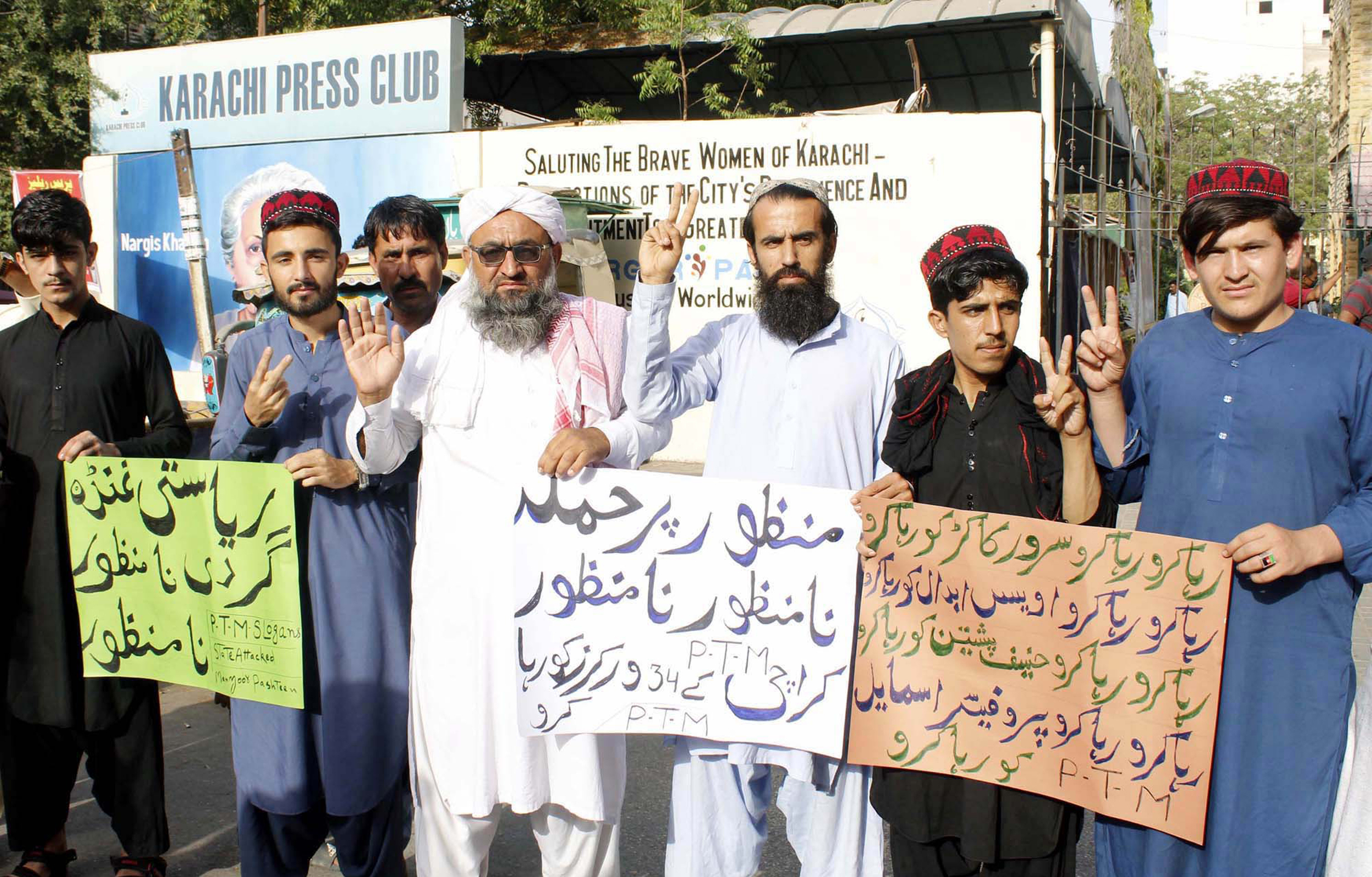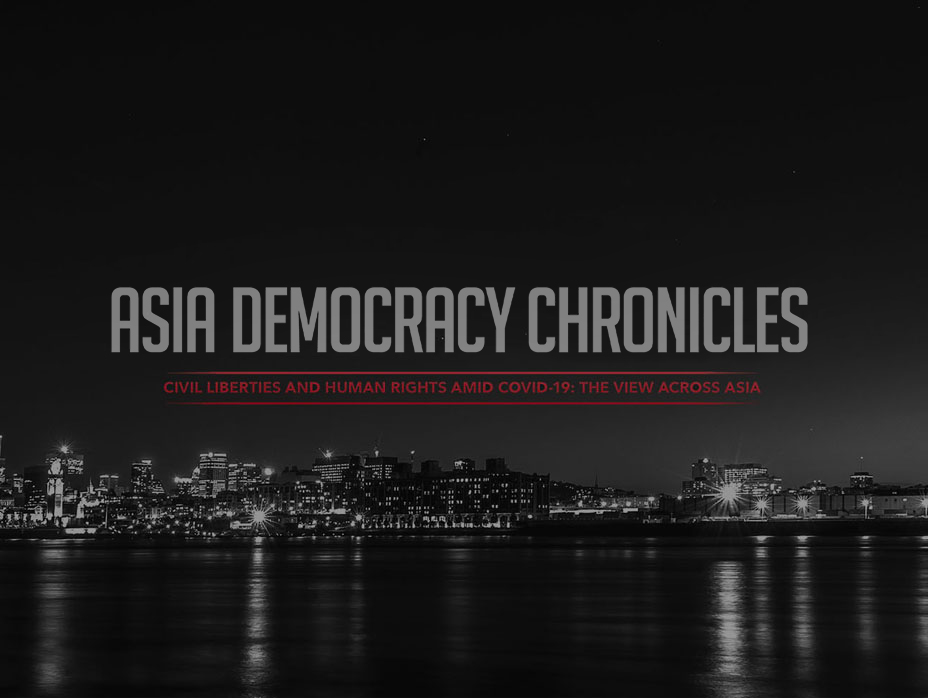For Pakistan and its citizens, 2020 has not only been defined by the COVID-19 pandemic. The year was also marked by increasing control over content on digital services operating in the country.
The Pakistan Electronic Media Regulatory Authority is a constitutionally established federal institution. The institution has ordered apps such as TikTok, YouTube, and Bigo LIVE to remove content that it deemed “inappropriate.” In the past year, the twice banning of TikTok and the bans on web series Churails and access to its host platform, popular video game series PlayerUnknown’s Battlegrounds, and a Gala biscuit ad, alongside similar instances, had stoked much debate on the nature of free speech and internet accessibility in the country.
On April 15, Pakistan’s federal government formally banned the far-right party Tehreek-i-Labbaik Pakistan (TLP), whose supporters staged three days of violent protests across the country after the arrest of their leader. The next day, a Friday, the Pakistan Telecommunication Authority (PTA) temporarily blocked access to social media platforms — Twitter, Facebook, WhatsApp, YouTube, and Telegram — from 11 a.m. to 3 p.m. In a statement, PTA described the move as a way to “maintain public order and safety.”
Interior Minister Sheikh Rasheed apologized for the ban in a video. He said that it was necessary to restrict the mobilization of protests by the TLP, which were planned after Friday prayers. In the video that was shared on social media, Rasheed said that the “the terrorists, agitators, and those spreading unrest through social media have been defeated.”

Social media has given marginalized groups, like the non-violent Pashtun Tahafuz Movement, a platform.
Draconian rules
The ban on social media in Pakistan came amid public debate on internet censorship. Ahmer Naqvi, a journalist, believes that the government’s move makes it increasingly clear that the state is looking for an easy way out. “The Pakistani state often uses social media as a scapegoat, and the decision to enforce such bans should not be made willy-nilly,” he says. “They do it because for them it’s the easiest response, and that’s not how it should be.”
The Churails ban generated much attention because of the controversial nature of the show and the fact that it was streamed on an Indian streaming service. Churails creator Asim Abbasi was quick to point out that consumers and citizens need to question who the ban really harms. “The loss [of potential access to projects with Zee5 and other streaming platforms] is more for Pakistani actors, filmmakers, and technicians,” he says.
“Also, in this day and age, what does a ban actually mean?” adds Abbasi. “It’s available on other websites. It can be accessed through a VPN. You’re making piracy rampant in your country.”
To make matters worse, the government passed the Removal and Blocking of Unlawful Content rules in November 2020. Bolo Bhi, an advocate for digital rights, describes the rules as “draconian.” He writes that they “undermine the citizens’ right to privacy and enhance the state’s surveillance powers.”
The rules “set broad parameters for the country’s internet regulator to censor online content,” reports Al Jazeera. They require social media companies with over half a million users to have offices in the capital and to comply with demands for removal of content that the Pakistani Telecommunication Authority deemed unfit.
An empty promise
The pushback against the controversial internet censorship rules came from all sectors of Pakistan society. Journalists, digital media consumers, and rights activities all took part in online campaigns to protest the policing of their online activities, and the result was an agreement by the state to review the new draconian laws.
The agreement is beginning to sound like an empty promise, though. Usama Khilji, a digital rights activist, lists the barriers that limit Pakistani’s access to the internet. “Security policies that lead to limited or no access to internet in the peripheral regions of Pakistan, including newly merged districts of Khyber Pakhtunkhwa, most of Balochistan, Gilgit-Baltistan, and Azad Jammu and Kashmir; cultural attitudes that look at mobile phones with suspicion, especially for women; and high taxes on advanced mobile devices” all restrict internet accessibility in the country. They make it “much harder for the masses to empower themselves through knowledge and information,” he says.
Over the course of the country’s tumultuous relationships with authoritarian rule, the media has almost always been under constant attack by the state — whose debilitating restrictions range from curtailing the freedom of print media in the 1970s and 1980s to interrupting media transmissions on national TV channels less than two years ago.
Arslan Athar, a writer focusing on culture and technology and the founder of Pakistani anthology The Desi Collective, believes that those who attempt to control the narrative have always made the same mistake. “They don’t realize that it only works till a certain point, and that point will come a lot quicker in this fast-paced digital age,” he says. “After that point, people will start questioning why they’re being fed this narrative, and that gets a lot harder to control.”

The ban on social media affects more than just Pakistanis seeking entertainment. It also prevents them from earning a living from online platforms like TikTok.
A platform for the voiceless
With the digital revolution, censorship now has a very different result. Athar adds that the internet has democratized knowledge. “There are thoughts being shared online that don’t make the ruling elite very happy, but that doesn’t mean they are wrong thoughts,” he says. “To censor the narratives that they don’t like is very restrictive, especially when it comes to using the internet as a way of knowledge accessibility.”
Khilji has shared his belief that social media can be empowering, particularly at times when no other platform is willing to give marginalized groups a voice. One such group is the Pashtun Tahafuz (Urdu for “protection”) Movement. The non-violent protest movement demanding rights for Pashtuns in Pakistan’s former Federally Administered Tribal Areas garnered support on social media before any mainstream media outlets gave space to its narrative.
Where security has long been used as a pretext for censorship, mass access to the internet and the growth of diverse platforms like TikTok or media expression through entertainment such as Churails — both of which have come under the fire of the censorship board — have emerged as proofs that censorship goes far beyond national security.
“TikTok is unique because it is perhaps one of the first platforms in the country that was popularized through a bottom-up approach,” says Naqvi, who’s also a blogger. The TikTok ban was justified on grounds of “inappropriate content.” However, usershave questioned why the state is only censoring content they don’t find appropriate on this particular platform. TikTok had about 33 million users in Pakistan in February 2021. Many of them have called attention to the silencing of countless citizens through such censorship.
Hija Kamran, digital project lead at Media Matters For Democracy, feels strongly about what the ban means for users of the app and what it says about state control. “TikTok isn’t just for entertainment,” he says. “A lot of people, particularly from lower-income groups or working-class backgrounds have been able to navigate TikTok, earn money, and gain an audience.” He adds that the cross-border exchange of content in the South Asian region due to similar languages has also significantly broadened the reach of upcoming South Asia entertainers.
In the cases of banning the web series Churails for its dark sexual commentary and deep dive into the exploitation prevalent in the entertainment industry or a Gala biscuit ad that featured a scene of a woman dancing at a wedding, media control can clearly be seen to go beyond political preservation and state criticism.
Khilji says, “The spate of censorship is clearly part of a state agenda to silence dissenting and critical voices, as demonstrated by the pressure on media houses to fire critical journalists and transparency reports by social media companies that show the high number of requests from the Pakistani government to censor content that is critical of state policies.”
For Athar, there’s only one way forward. “Pakistan’s policies need to align with digital consumer behavior, and laws need to be made with the digital user — not the state narrative — at the forefront,” he says. Unfortunately, this remains an aspiration at best. ●
Anmol Irfan is a Pakistani writer and freelance journalist. She’s the founder of online Pakistani community platform Perspective Magazine and writes about gender, the intersection of culture and politics, and Pakistani society.

Pakistan’s restrictive policies have led to a decline in internet freedom in 2020.
Shrinking online civic spaces
Pakistan’s policies have led to a decline in internet freedom in 2020, according to a report issued by the Institute for Research, Advocacy, and Development. The Islamabad-based independent research and advocacy group states: “In 2020, the already unfriendly legal framework governing freedom of expression, right to information and digital rights in Pakistan worsened considerably. The country experienced major setbacks in enforcement of digital rights, freedom of expression and right to information — especially in online spaces — through regression in the areas of internet policies and regulations. This resulted in a rise in censorship, hate speech, digital surveillance and breach of privacy, and disinformation and misinformation online.”
By Asia Democracy Chronicles



















